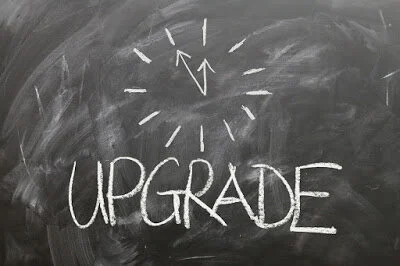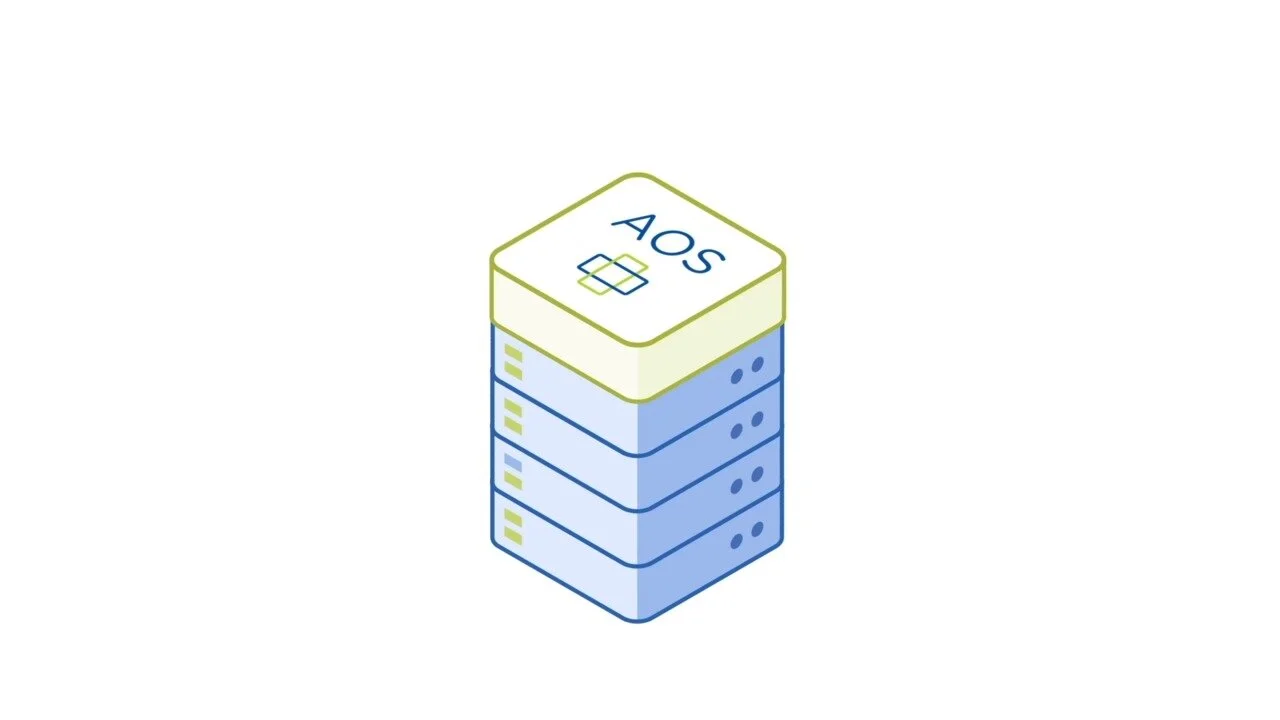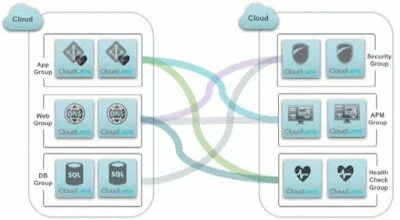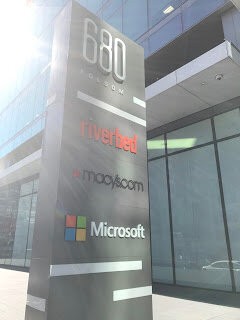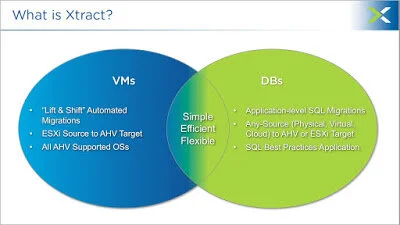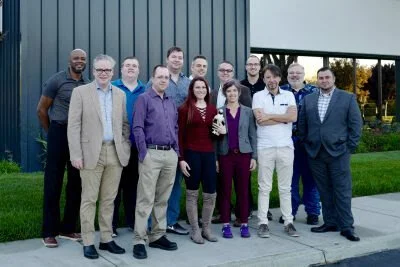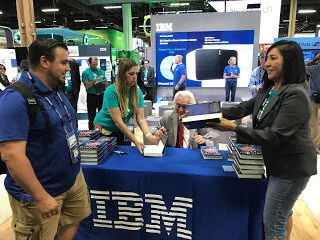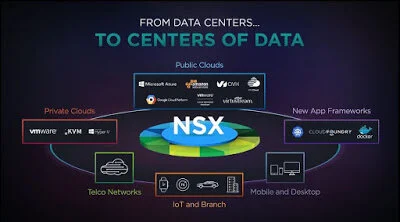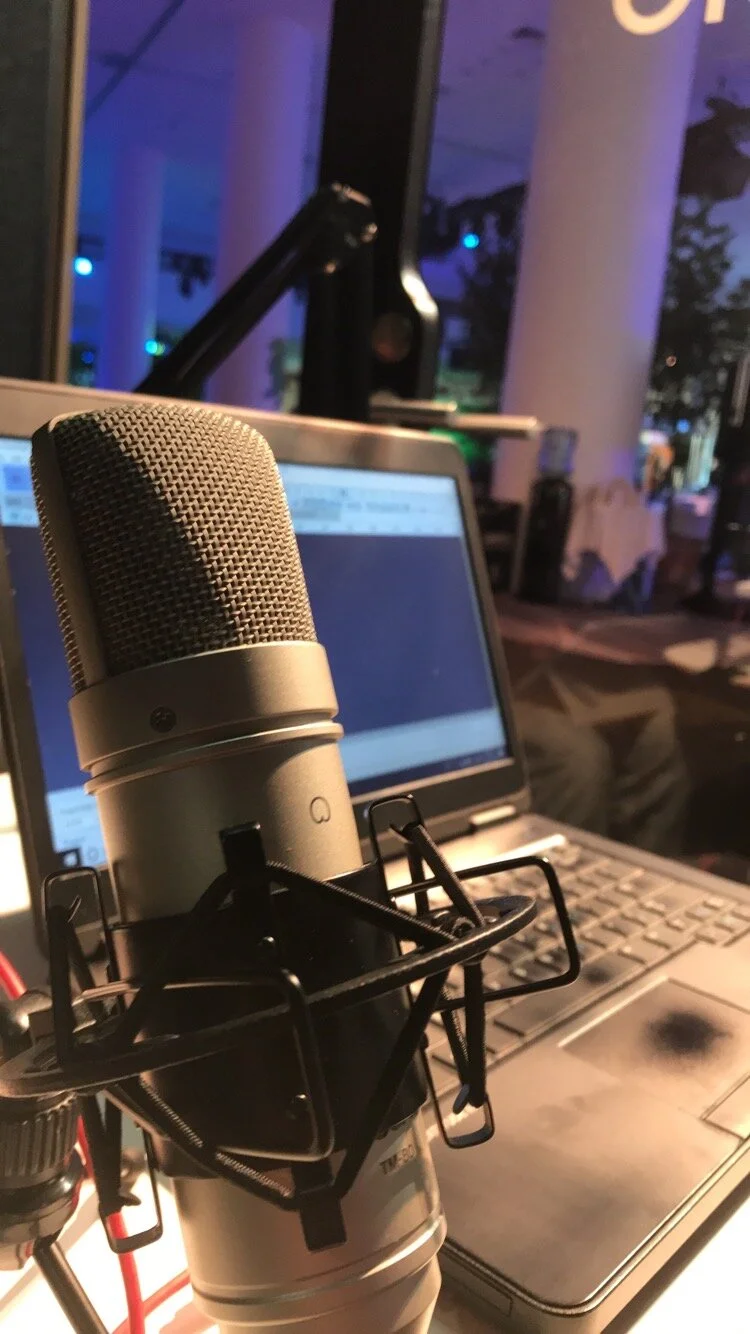VMware ESXi 5.5 End of Support: What Does That Mean for You?
On September 19th, 2018, VMware vSphere ESXi 5.5 reaches End of General Support. But what exactly does that mean? Well, after the 19th, VMware will no longer provide new security patches, bug fixes, maintenance updates, upgrades, or new hardware support. Also, you may no longer open phone support tickets with Global Support Services (GSS) for severity 1 outage issues.
That's not to say all is lost, but your environment is in a precarious state. VMware will maintain Technical Guidance for vSphere 5.5 until September 19th, 2020. Support requests can only be opened via the self service portal for severity 2 and lower issues, so if you experience an outage, you are on your own. These tickets only apply to supported configurations as well.
As a VMware Support and Subscription (SnS) customer, you need to upgrade before September 19th to avoid losing the full protection of a supported vSphere platform.
"You're right, we need to upgrade... But what does that all entail?". The vSphere platform has a very specific upgrade path you need to follow to ensure no service interruptions during the process. Before we dive into the VMware aspects, there are other variables to consider. Let's start with the host servers; the hardware ESXi calls home. Validate that the hardware is compatible with the version of ESXi you are upgrading to via the VMware Compatibility Guide. Take a look at host BIOS and firmware as well. The host hardware vendor may also provided information about compatible versions of ESXi on their website.
Even in the event that the existing BIOS and firmware is compatible with ESXi 6.0 or higher, now is a great time to upgrade. This helps to keep your hardware secure and up to the manufacturers recommended levels. One of the first things the vendor's tech support engineer is going to tell you to do is to upgrade the BIOS to troubleshoot any problems you may call in with. I know this from many calls to *insert hardware vendor here*.
So the host hardware is taken care of, what's next? Think about other systems that interact with vSphere. Is your storage platform compatible? What about your backup solution? Are there any vCenter plugins in use? Potentially many systems could be impacted by a VMware upgrade that's not properly planned.
"Alright, the hardware and peripheral systems are ready to go, time to move on to VMware!". Well, almost. Before diving into upgrading vSphere, take inventory of what vSphere editions and VMware programs you have deployed in your environment. Certain versions of vSphere and vCenter Server cannot be upgraded directly to 6.5+, so be sure to check the VMware Product Interoperability Upgrade Matrix first.
Calling back a few paragraphs, I pointed out that vSphere has a very specific order of operations for upgrades. Now that you have the full list of VMware products in play in your environment ready to go, you can map out your next steps. A quick search of VMware KBs will provide the upgrade sequence for the specific version of ESXi to which you have chosen to upgrade. Here is the KB for ESXi 6.5. You'll notice that services such as vRealize Operations, NSX, and the Platforms Services Controller (PSC) must be upgraded before vCenter.
It's worth noting that hosts are upgraded AFTER vCenter. Older versions of ESXi can connect to newer vCenters, but it does not work the other way around. I have encountered many people in my days attending VMUG meetings where they were unaware of this requirement and upgraded the hosts first.
One more thought on vSphere upgrades: in-place versus a clean install. I'm not going to tell you which way is best. Everyone has their own options and experiences. What I will say is that, from my experiences, in place upgrades to vSphere 6.5 have been successful. I've encountered some issues going from 5.5 to 6.0, mainly around Site Recovery Manager, but 6.0 to 6.5 appears to be more stable than in place upgrades past. (Again, this is my experience, your may vary.)
Finally, be sure to have backups before upgrading your environment and read the release notes for each product before proceeding. Watch out for any known issues that may trip you up during your upgrade or daily operations.
The key to a successful vSphere upgrade is planning. With the clock ticking on ESXi 5.5, you need to start planning as soon as possible to ensure a smooth transition and to stay protected.
Further Reading:
End of General Support for vSphere 5.5 (51491)
VMware Lifecycle Policies
VMware Extened Support
If you'd like to continue the conversation about vSphere upgrades, do not hesitate to contact me via any of the channels provided below. Do you have an idea or a topic for the blog? Would you like to be a guest on the ExploreVM podcast? If so, please contact me on Twitter, Email, or Facebook.
Top 3 Features of Nutanix AOS 5.6
On April 16th 2018, Nutanix released it's newest version of AOS (Acropolis Operating System). The 5.6 release has 9+ new features. But rather than cover them all, I wanted to call out what I consider the top 3 features of this release.
One or Two Node Deployment for Remote / Branch Office
Many businesses face the challenge of maintaining IT resources in remote locations. Whether it be a branch office or retail outlet, choosing the right solution to provide infrastructure which is easy to deploy and manage can prove difficult. Enter AOS 5.6. With this release, Nutanix now offers a single or dual node solution for ROBO deployment. The single node deployment can support up to 5 VMs, with disk level resiliency. The two node option supports up to 10 VMs and offers node level resiliency. Both options are managed centrally via Prism Central, allowing admins to administer the nodes alongside their on-premises data center. ROBO sites can also utilize cross hypervisor DR between the remote site and the DR location. And with all other Nutanix, the ROBO sites can be remotely upgraded using the same 1 click upgrades as the local site, saving the complexity of keeping a remote office up to date.
Microsegmentation hits GA
AHV users can now benefit from the GA release of Microsegmentation. Built into 5.6 and managed via Prism, application centric policy models can be deployed using a stateful distributed firewall. Single virtual machines or groups of VMs can all be protected, including blocking east/west traffic between them. Microsegmentation offers granular application isolation and zoning without configuring VLANs.
Volume Group Load Balancing of vDisks
For users with high IO VMs, AOS 5.6 includes the ability for AHV to load balance vDisks in a volume group. CPU and memory resources are pulled from multiple CVMs (Controller VMs). This distribution across CVMs helps to improve the performance of the virtual machine and reduce bottlenecks.
Related links
What's New | AOS 5.6 - Nutanix
VCDX133.com - Nutanix AOS 5.6 Released
VCDX56.com - Nutanix AOS & Prism Central Version 5.6 & Much More Released
Do you have an idea or a topic for the blog? Would you like to be a guest on the ExploreVM podcast? If so, please contact me on Twitter, Email, or Facebook.
Looking Through the (Cloud)Lens with Ixia
As data centers evolve, utilizing multiple cloud locations is becoming more common place. Whether its on-premises, hybrid cloud, or public cloud, monitoring this data is becoming a more difficult task. Cloud providers do not allow packet level inspection due to their architecture. Direct access to the hardware is prevented as well. Ixia looks to address these issues with their public cloud monitoring tool CloudLens.
Ixia CloudLens is a two part solution that offers end to end monitoring, down to the packet level, in multi cloud environments. CloudLens SaaS management pane runs in the cloud on serverless architecture. The management portal is coupled with either a CloudLens Sensor Container, running on a Docker container, or CloudLens Sensor Agent for Windows based solutions.
How Does CloudLens Work?
Starting with installation of the CloudLens Containers or agents, metadata about the cloud environment is collected. This data includes what cloud provider the sensor is running on, the resources being utilized by the instances, regions, and applications running on the instance. After this information is categorized by CloudLens, collection and tracking of relevant information will begin while disregarding unnecessary data.
Configuring visibility into cloud traffic utilizes an easy 5 step workflow:
Identify source instances
Create source groups based on metadata
Identify tool instances
Create tool group based on metadata
Create secure visibility path from source to tools with intelligent filtering
In the above example, source groups are broken down into a typical 3 tier application use case, and the tool groups are the various methods utilized to monitor the health of the application.
Connections are made to each group utilizing drag and drop via the CloudLens Dashboard. This creates a secure peer to peer VPN connection. These connections can be one to one, or one to many. By utilizing groups, new instances created in the cloud are automatically detected and added to their corresponding group within CloudLens. No extra configuration is necessary, making scaling easy.
As the Ixia CloudLens is a container and SasS based model, the solution can be ran on AWS, Azure, GCP, IBM Bluemix, Alibaba Cloud, CentryLink, and the on-premises datacenter. Sensor agents and containers can be spun up in the in house datacenter and report back to the same dashboard as the public cloud solutions. Another benefit to the deployment model of CloudLens is that no additional security configuration is necessary. As the components live in the cloud environment, they ingest the existing security profiles.
One final benefit of CloudLens is container visibility. Docker container network namespaces map to the same host network namespace, but they operate independently to each other. This proves to be troublesome for traffic monitoring. By invoking the host namespace for the CloudLens Sensor namespace, the traffic can be easily monitored as it passes through the Docker host to the external network. The CloudLens Container namespace can also be configured to share the same namespace as the desired application. The "sidecar container" configuration allows for traffic monitoring of a single app given the shared network namespace.
For more information on CloudLens, and other Ixia offerings, take a look at their Tech Field Day 15 Presentations, or visit Ixiacom.com
Disclaimer: I was invited to participate as a Tech Field Day Delegate as a guest of Gestalt IT. All expenses, including food, transportation, and hotel were covered by Gestalt IT. I did not receive any compensation to write this post, nor was I requested to write this post. The above post is written of my opinion and not that of Gestalt IT.
Riverbed Steel Fusion: A New Approach to Remote Office Infrastructure
Approaching the remote office/branch office (ROBO) deployment can be a more complicated task than it originally appears. Many vendors in this space offer a quick deployment, but fail to look deeper into the needs of the business to provide a well rounded solution. How does a business plan for disaster recovery at a remote site? What about offices in foreign countries? Data location and international laws could complicate the ability to protect intellectual property of the business. Enter Riverbed Steel Fusion. Steel Fusion offers administrators simplified ROBO deployments, centralized management, and provides options for problems that could be easily overlooked when planning for remote offices.
What is the SteelFusion Solution?
SteelFusion is a Software-Defined Edge solution consisting of a two parts: Core and Edge. In the on-premises data center, the SteelFusion Core (a physical appliance or virtual machine) is connected to the SAN or NAS storage. It should be noted that the SteelFusion core can also be linked to AWS or Azure storage components for those with a multi-cloud solution. The SteelFusion Edge appliance is deployed at the remote site. Once the base network configuration is made, the appliance is remotely managed from the Core.
Riverbed's Parimal Puranik white boarding SteelFusion at TFD15
How does SteelFusion differentiate from other ROBO solutions?
SteelFusion separates itself from the pack by keeping corporate data housed in the main data center. With the data on-premises, planning for backup and disaster recovery is simplified to one site. No need to develop a complicated solution encompassing multiple remote offices. Similarly, since data lives in the SAN/NAS, it becomes less vulnerable to foreign data laws. The data required by the ROBO, whether it be files or VM disks, is replicated and cached to the Edge, and changes are written back to the SAN/NAS at the Core.
Aside from passing the data to the remote site, the Edge appliance can also replace traditional compute solutions with Riverbed’s Virtual Services Platform. VSP runs VMware ESXi to on the SteelFusion Edge appliance, eliminating the need for additional hardware.
On paper the solution seems solid, but does it hold up in the real world? The answer appears to be yes. Based on statistics provided by Riverbed in September of 2017, there are over 10,000 appliances deployed across 1,200 customers globally. From experience in my professional life, installation and management is easy. I have encountered a few enterprises in my area currently utilizing SteelFusion, or with plans to implement SteelFusion in 2018. While it may not be a perfect solution for every ROBO use case, SteelFusion is certainly worth investigating.
For a deeper overview of Riverbed’s SteelHead technology, check out their presentation at Tech Field Day 15 Here.
Disclaimer: I was invited to participate as a Tech Field Day Delegate as a guest of Gestalt IT. All expenses, including food, transportation, and hotel were covered by Gestalt IT. I did not receive any compensation to write this post, nor was I requested to write this post. The above post is written of my opinion and not that of Gestalt IT.
That’s a Wrap: An ExploreVM Look Back at 2017
One word comes to mind as I sit here and look back at 2017 and the adventures I've had with the ExploreVM blog/podcast - Growth. I am thankful to be part of a great community that has provided new opportunities, new ventures, and new experiences. I haven't been nearly as productive on the blog/podcast front in November and December of last year due to some personal matters, getting slammed with work, and the holiday. So, let's kick off 2018 with a review of 2017, and a preview of things to come.
Community Recognition
For the second year in a row, I was privileged enough to be part of the VMware vExpert program. I often tell people that just because I am a "vExpert", it doesn't mean that I know everything about VMware. And man is that true when immersed in the vExpert Slack channels or conversating with vExperts at events. I've learned so much from fellow vExperts in the past year that I couldn't begin to thank everyone who's knowledge I've grown from.
I also took a crack at applying for another community program, and to my surprise I was accepted. I was named one of the 150 Nutanix Technology Champions for 2017. What I like about the NTC program is that it is smaller than similar groups which gives individuals a better experience. There are a great group of technologists in the NTC program which have helped me grow my skill set immensely since I joined. Angelo Luciani runs a great program at Nutanix!
Blogging and Podcasting
As an accompaniment to the blog I've been running for four years, I dove into the world of podcasting. The first season of the ExploreVM podcast launched in February with15 episodes focusing on various topics in the datacenter realm. It's been great to follow the career journey of my guests after their appearance on the show.
In January I will begin recording episodes for Season 2, which I plan on kicking off in February. The goal is to publish an episode every two weeks. I'm looking for guests, so please do not hesitate to reach out on Twitter or drop me an email if you want to appear. I'd like to bring on some new voices and perspectives in the next season. Let's explore the datacenter world together!
On the blog front, 2017 marked my most productive year with 14 posts. The vExpert and Nutanix NTC program provided lots of great access to products and announcements, which in turn lead to numerous posts. With added posts, comes added readership as well. A bit of a humble brag, but ExploreVM.com saw a 325% increase in hits from EOY 2016 to EOY 2017. If everything I've got lined up works out as planned, including a new website design, 2018 should see the same growth!
As we look forward into 2018, I have several posts lined up as a result of Tech Field Day. As we go forward, I see the ExploreVM blog taking more of an analyst route.. However, that does not mean that my event recaps or technical posts are going away, they will just occur a bit less often. Diving into technologies, learning what makes them work, and figuring out where they fit in the datacenter world has become not only beneficial to my professional life, but a very enjoyable aspect of my writing.
I have also launched a YouTube channel which I will be publishing videos on various topics. I expect these videos will parallel some of the podcasts, or be informative similar to VMUG sessions. This will be a new venture for me into 2018, but all of my previous podcasts are available there currently for review.
One more thought on the content creation front. As growing the blog and podcast is starting to incur some costs, namely hosting, software, and recording equipment, I am considering doing some sponsored content. This would be done in lieu of running ads. I find sponsored content to be less intrusive than ads on sites and podcasts, and when done properly, the posts can have quality content. If your company or product would like to sponsor a post or episode, please email me, or message me on Twitter.
Speaking and Events
The core of my community involvement has always been attending and speaking at VMUG meetings, and 2017 was no different. This year I added Keynote Panel speaker to the resume on top of my usual community sessions. Indianapolis, Chicago, and Wisconsin VMUGs were all gracious enough to allow me to speak at their UserCon's this past year. I take so much joy in giving back to the community that has helped my career explode.
If you have never spoken at a VMUG meeting, please consider doing so. Community generated content is always in demand. Many people out in the vCommunity, myself included, are more than willing to coach you on your session. Like I mentioned before, everyone has useful experience, don't be afraid to share.
This year had two new speaking firsts. March led off with a pre-recorded webinar that was sponsored by Intel and Nutanix. The recording experience was a touch nerve racking as I had no idea how I looked or sounded until the webinar aired. That being said, I would absolutely do it again. Community involvement led to speaking at two conferences during the summer of 2017.
My final event for 2017 was an invitation to Tech Field Day 15 in San Jose, California. What's unique about the TFD15 experience versus my other events for the year is that the delegates get to grill the vendors and learn about products rather than having to speak on a topic. We were either brought to the offices of the vendor, or they came to our location, and we were granted access to everyone from engineers to CEOs. While I am slipping a bit in the timeliness department, look for blog posts about these vendors in the coming weeks. Outside of the Tech, I got to meet, chat with, and learn some amazing folks in our industry. They certainly lit a fire underneath me to do more with myself after spending just a few days in their company.
Now, if you'll excuse me, I have to get on to writing other blog posts and working on the website redesign. One last bit of info, I've included some of my goals for 2018, as well as some blog and podcast stats for last year.
Goals for 2018
AWS Certified Solutions Architect - Associate & Professional
VMware VCIX
Attend/speak at 3 conferences
Speak at a VMUG in a state that I have not spoken in before
Hit 2000 Twitter followers (currently at 940)
Podcast Stats
Number of Podcast Downloads: 1149
Number of Plays on ExploreVM.com: 288
Listeners on 5 Continents
Top 3 Downloaded Episodes
Making the Move to a Pre-Sales Role / VMware 101 (tie)
IT User Groups
Microsoft Azure
Top 3 Played Episodes (on the blog)
A VCDX Discussion
Making the Move to a Pre-Sales Role
On-Premises Datacenter is Dead, Long Live On-Premises Datacenter
Blog Stats
325% increase in views in 2017
Readers From 6 Continents
I hope everyone had a great holiday, and has an amazing 2018. I welcome any feedback on my previous posts, podcasts, or any of the upcoming ideas I've mentioned in this blog. And as always, if you'd like to be a guest or have an idea for an episode of the ExploreVM podcast, reach out to me on Twitter, Facebook, or Email.
Nutanix Xtract Now GA: Simplified Migration from ESXi to AHV
Nutanix Xtract is now GA
Originally announced at .Next June 2017, Nutanix Xtract is a one click experience to simplify the migration of ESXi VMs to AHV.
Xtract is agentless and retains the network configuration to the new AHV VM. As data is periodically synced to the target VM during the process, the only downtime comes when you cut over to the new VM. During the migration process, AHV drivers are automatically installed on the VMs operating system. The Xtract migration process also automates several of the manual tasks encountered by other migration tools. Looking to mitigate some of the risks with migrating VMs between platforms, Xtract comes with a roll back feature built in.
Xtract 1.0 is now available to all Nutanix customers for free. You can watch a demonstration of Xtract for VMs here. For more information, check out www.nutanix.com/xtract.
If you'd like to join the conversation about Nutanix Xtract, have any podcast/blog ideas, or would like to be a guest, reach out to me on Twitter (@ExploreVM), Email, or on Facebook.
Blogtober 2017 - A Thank You to Tech Field Day
Welcome to #Blogtober!
With my first post for #Blogtober, I wanted to take a moment to thank the folks over at Tech Field Day for a great experience. But before we dive into TFD, a bit about Blogtober. If you're not familiar, it's a movement started by Matt Heldstab to encourage members of the vCommunity to generate more blogs, increase their visibility in the community, and share what they have learned at conferences. As of writing this post, there are currently 56 bloggers signed up for this years Blogtober, with VMUG contributing prizes to random bloggers. For a full list of the blogs participating, check out the Blogtober Website.
Now, on to Tech Field Day!
Last week I had the distinct privilege to participate in Tech Field Day 15 in Silicon Valley. Over the course of 3 days, we received demonstrations from 7 different vendors across the IT spectrum. What makes this a unique experience is that, in most cases, the delegates get the opportunity to pick the brains of the engineers, CEOs, or owners who are presenting their product. We have a 2 hour window to learn about the product and deep dive into the nuts and bolts of what makes it work.
The eleven delegates, myself included, came from a range of backgrounds and nationalities. Outside of the United States, Canada, England, Italy, and the Czech Republic were represented. This dynamic provided for some unique perspectives when it came to discussions with the vendors, and discussions among the delegates as we traveled between sites.
Tech Field Day could not be a success without the hard work of the staff from Gestalt IT. Stephen Foskett was our ringmaster and the face of TFD. Off camera, Nikki made sure all of the delegates had everything they needed during each recording session and beyond. I owe many thanks to both of them, as well as the staff behind the scenes that I have not yet met. Kudos on a well ran event!
As for the 7 vendors, keep an eye on ExploreVM.com for posts about each of them over the next two months. I'm looking to do a review of the each session and a deep dive into the products. I already have some post TFD follow up meetings with a few of the vendors to get more information, so these posts will have a lot of content.
If you'd like to get caught up on Tech Field Day 15 before then, search #TFD15 on Twitter, or check out session recordings at the Tech Field Day YouTube Channel.
Final Thoughts.
I had originally planned on writing and posting this blog on Monday. Waking up to the tragic news out of Las Vegas took a lot out of me these past few days. Many of us in the tech industry are very familiar with the area that the massacre occurred. Even during the shooting, many of our colleagues were at the Mandalay Bay preparing for another conference. As far as I am aware, no one in the vCommunity was harmed during the shooting, but that is of little solace to the families of those 58 killed and 527 injured. Hundreds, if not thousands of people had their lives changed forever that day.
But, we can NOT let fear and hate win. I believe there is far more good in this world than there is evil. We saw it with the long lines of people waiting to donate blood on Monday. We saw it in the millions of dollars raised to help hurricane victims in Texas and Florida. And we see it every day in ourselves and our lives. Stand up to fear and continue to live your life. Keep helping those in need whether it be from natural disaster, a hungry family in your community, or as simple as helping a stranger in a store reach that top shelf. Let's continue to be the good, be the change in the world.
Now, back to your regularly scheduled technical content...
If you'd like to join the conversation about Tech Field Day 15, Blogtober, have any podcast/blog ideas, or would like to be a guest, reach out to me on Twitter (@ExploreVM), Email, or on Facebook.
"You may say I'm a dreamer
But I'm not the only one
I hope some day you'll join us
And the world will be as one"
-John Lennon
VMworld 2017 Recap: The Sessions
This year I attended VMworld on a vExpert blogger pass. To document my experiences, I'm writing up a VMworld 2017 Recap in 3 parts: The Keynotes, The Sessions, and vBrownBag Tech talks. I also recorded a couple of podcast episodes during the conference, you can listen to them HERE. With the second post in the series, I dive in to a few of the sessions I attended that I feel had a lot of value.
Architecting Data Protection with Rubrik
Rubrik is a product I have been following for a while. While their technology is intriguing, what I like about their presentations is that it's not just marketing mumbo jumbo. They provide content that's useful and thought provoking, so I knew this would be a good use for my time in an already packed schedule.
You knew from the moment you walked in the session would not be like the rest
The session, presented by Andrew Miller and Rebecca Fitzhugh, took a look at not only what constitutes a disaster in IT, but also how to assess and prepare for one. Given recent events, hurricanes and natural disasters are an easy place to start when thinking about disasters. Rebecca presented lessons learned from 2005 when Hurricane Katrina ravaged New Orleans, and Hurricane Rita struck Texas just a few weeks later. Sure, the DR site is in another state, and what are the odds that massive hurricanes would strike both locations so close? Using Houston and New Orleans should be fine! Until that once in a lifetime perfect storm of events comes together. Deeper thinking about location planning could have helped prevent many IT headaches.
But what about the other types of disasters? Ones not so obvious like power outage, or the most common type of disaster, human error. Business impact analysis is a crucial step in helping to prepare for disasters. For those who may not know what a BIA consists of two components:
Technical Discovery - data gathering and documentation
Human Conversation - Speaking with people about:
What IT systems they rely on?
What is the monetary impact of a disaster/failure?
What are the most time critical and informational critical business processes?
All of that information is collected and used to help decide what availability or recovery capabilities are justifiable based on the requirements, impact, and costs. The reports generated classify data and systems with priority tiers.
When moving forward with planning after a business impact analysis, be sure that the details and requirements are fully understood. Many places say they need four or five 9's of up time without truly knowing what goes into delivering that type of availability. Also, when planning out Service Level Agreements (SLA), is planned downtime for maintenance and upgrades included in the agreement? Failure to adequately account for those outages could push you into violation of your SLA while trying to keep the environment up and running. One more thought about SLAs. When does the SLA reset? Is it a yearly on January 1st? Quarterly? Weekly? Be sure to have a solid understanding of when the SLA resets so you don't violate it.
Another thought on SLAs; make sure your Recovery Point Objective (RPO) and Recovery Time Objective (RTO) fit within the constraints of the SLA, and vice versa. It should also be noted that the shorter your RTO (the target amount of time to restart a service after an outage) and RPO (the acceptable amount of data loss from an outage), the more expensive the backup solution will be to implement and maintain.
And the final take away from Rubrik's session is that Business Continuity (BC) is different than Disaster Recovery. In environments with developed and deployed BC plans, an outage can occur and the end user will not experience any loss of productivity. Business Continuity tends to focus on the smaller, day to day issues that could arise such as the loss of a piece of hardware and are smaller in scale than a full disaster. BC events should have plans documented so they can be recovered from quickly.
"Complexity is the enemy. Whatever you do. Whatever you buy. Simplify your architecture and expect more." - Andrew Miller
*EDIT*
Official Recording of the Rubrik VMworld Session
Rubrik Slide Deck
HPE vExpert Briefing
One of the benefits of the VMware vExpert program is access to exclusive content and meetings from vendors. At VMworld, HPE held 2 sessions for vExperts to discuss current and upcoming product information. In my professional world, I work for a VAR that partners with nearly all major vendors in the datacenter space. As I have limited exposure to HPE products, I felt this would be a good session to help me learn more about their offerings, see where they could help our clients, and give me a working understanding should I need to deploy HPE in the future. Plus it didn't hurt that Calvin Zito also lured us with the promise of food and beverages.
While HPE has a large portfolio of products, the part of the session that stood out the most to me revolved around their hyperconverged and automation offerings. Dubbed "Project New Hybrid IT Stack", we were told the actual product name is pending, HPE combines Simplivity with Synergy to create an integrated cloud solution for on premises and public clouds. One of the goals is to be able to assess cost and decide where the application best fits in the environment, whether it's on premises, cloud, etc…
Details of the stack are still being flushed out, including how they will handle the migration between on premises and public clouds. It was said "Given the great partnership with VMware, it wouldn't be surprising that NSX would be utilized". Although no official timeline has been released, we were told to expect the product to be GA in the "nearish-term".
Continuing with the cloud theme, we moved on to Private Cloud Express with vRealize Automation. PCE comes as a pre-integrated hardware and software solution on HC380 hardware with Helion CloudSystem. The solution is currently in beta with relationships being built with public cloud providers for cross platform integration. HPE has certainly put themselves on my radar with this session.
Links provided by HPE:
HPE Hyperconverged Whitepaper
Scott D. Lowe's Gorilla Guide to Hyperconverged Infrastructure
Private Cloud Express
The Future with Dr. Michio Kaku
In an IBM sponsored session, theoretical physicist Dr. Michio Kaku discussed where science and technology is taking the future of the human race. In what he called the "Fourth Wave", Dr. Kaku called out that humanity's next greatest advances will be in Artificial Intelligence + Cloud Computing, Nanotech and Robotics, and Biotechnology. There was one prediction and one observation that stuck out to me above the rest. His prediction is that one day in the future we will be able to send our connectome, the mapping of our brains, into space on a laser which will give us the ability to explore the world at the speed of light.
Dr. Kaku's observation is on technology and business. To become the next billionaire take a look at a business, any business, find the friction and digitize it. He went on to point out how companies like Amazon and Uber used technology to totally revolutionize their respective markets. As a technologist, this struck me as if he was issuing challenge. How could I make an impact? How could I revolutionize a field; become the next Bezos or Musk? The session certainly left me feeling motivated.
It was a valiant attempt to get my picture with Dr. Kaku
VMworld Daily Top Rated Sessions
While not all sessions are available online, VMware has posted a few of the top rated sessions online for the public to watch. You can find those at the link below.
https://www.vmworld.com/en/us/video/top-sessions.html
If you'd like to join the conversation about VMworld 2017, have any podcast/blog ideas, or would like to be a guest, reach out to me on Twitter (@ExploreVM), Email, or on Facebook.
VMworld 2017 Recap: The Keynotes
This year I attended VMworld on a vExpert blogger pass. To document my experiences, I'm writing up a VMworld 2017 Recap in 3 parts: The Keynotes, The Sessions, and vBrownBag Tech talks. I also recorded a couple of podcast episodes during the conference, you can listen to them HERE.
Day One General Session
Day one kicked off with VMware CEO Pat Gelsinger taking the stage. After a short call to action for donations to help in the recovery efforts from Hurricane Harvey, Gelsinger dove into the progression of IT trends lately. Focusing on the decentralization of IT, automation, Internet of Things, and disruption for the improvement quality of life:
"We're not about bringing jobs back, We're about automating them away so that we can create higher value roles, and changing the industry...We're about creating higher value, higher paying jobs and changing the quality of life as a result" - Pat Gelsinger
He goes on to call out that apps are the technology reshaping customer experience. Using this as a segue, Gelsinger transitions to VMware's vision. This vision is "any application, on any device, on any cloud.". With technologies such as network virtualization, and edge, tech is "breaking out of tech" and reaching further with IoT. So how does this tie into VMware's vision? Workspace One.
Workspace One is VMware's offering to bring all of the pieces together in a way that's "consumer simple, but enterprise secure". Workspace One consists of three main pillars:
Apps and Identity
Consistent environment across all apps with Single Sign On and Mulitifactor Authentication
Management and Security
Consistent management and security with IT in control
Available either on premises or as-a-service (such as Horizon Air)
Desktop and Mobile
Airwatch
Compounding on the existing relationships VMware Airwatch has in the ecosystem, the next announcement was a partnership with HPI. President & CEO Dion Weisler appeared via video statement to announce that VMware's Unified Endpoint Management (by Workspace One powered by Airwatch) will be incorporated into HP's Device-as-a-Service offering. This is the first partnership for Workspace One/Airwatch and a major hardware manufacturer that does not focus on mobile devices. Press release here.
Next up Gelsinger yielded the floor to Sanjay Poonen, COO of Customer Operations to chat with Jennifer Manry about Capital One's use of mobile management and transformation.
Moving on to private cloud, VMware Cloud Foundation 2.0 is announced as part of the keynote. More can be read about Cloud Foundation HERE. Hyperconverged Infrastructure (HCI) is also a big part of the announcements made on Monday morning. Per Pat Gelsinger, vSAN has hit over 10,000 customers and is picking up 100 new customers per week. He also stated that VXRail is now the number one HCI appliance at Dell EMC.
Finally came the information that I was most looking forward to, VMware Cloud on AWS went GA on Monday, August 28th. At this time it is only available in the Oregon availability zone. To talk about the partnership in further depth, Pat introduced Andy Jassy, CEO of AWS. VMC on AWS allows administrators to utilize the public cloud without having to re-architect their applications and datacenters by using the same VMware software and application they already know inside and out. Andy states that the road map for future product development will come from customer input. So as this partnership gains traction, look for growth in feature sets outside of just geographic locations.
Despite my overall excitement for what VMware Cloud on AWS can offer, there is one thought that still keeps popping up, it's a fine line between enabling INTEGRATION to AWS vs MIGRATION to AWS over longer term. As your VMs will be running vSphere inside AWS, it's not a true method of migration to Amazon, there is still a lot of development that must be done for true migration.
Sticking with the cloud theme, VMware's next product announcement comes in the form of the first seven pieces of VMware Cloud Services:
Workspace One
NSX Cloud
Network Insight
Cost Insight
Wavefront
Discovery
AppDefense
The goal of these services is to give consistent operations across all clouds with the following four pillars for VMware's Cloud strategy:
Consistent infrastructure across clouds
Consistent operations across any cloud
Rich network of VMware based global cloud providers
Delivering IT agility while reducing complexity and risk
The integration with all offerings of VMware and integration with NSX is being stressed highly this year. Gelsinger referred to it as the connective tissue that ties everything together, and it's central to what VMware is doing with private cloud, mobile, IoT, and soon, public cloud.
"NSX has become secret sauce behind most everything we do. And maybe, what vSphere was to the first 20 years of VMware, NSX is becoming to the next decade or two. It's that important" - Pat Gelsinger
The Monday general session wrapped up with a discussion on security. The question is how do we protect applications and data as we expand out into IoT and a mobile workforce with attack vectors increasing daily? VMware's answer is a three part strategy:
Secure Infrastructure, build security in natively
Integrated Ecosystem, work with key players to standardize solutions
Cyber Hygiene, return to the basics
"Fundamentally, we the tech industry have failed you the customer. It is simply too hard, too complex, and breaches are growing too fast. We need a new approach." - Pat Gelsinger
The "five pillars of Cyber Hygiene" are basic practices that we should all be doing already, but they are often overlooked or ignored in practice. On the national scale, there is now a big push to get back to practicing some of the security basics, which when ignored, have lead to many of the breaches in recent history
VMware AppDefence has been introduced not only as a component of Cloud Services, but as another way to help secure corporate data. I will be breaking down AppDefense in a future deep dive post, but you can read more about it now from the VMware Press Release.
Day Two General Session
Day two keynote opened with Pat Gelsinger and Michael Dell sitting down for a fireside chat with questions submitted over the previous day by community members. The first topic brought up was VMware support. Gelsinger requested that we do submit feedback based on our experiences, and he is disappointed with the amount of concerns around GSS. To counteract some of these concerns, VMware has announced two new developments to help with support, including VMware Skyline. Skyline offers proactive and predictive recommendations to help with environmental stability and performance. The product page for Skyline is located HERE.
Personally, I am not a fan of fireside chats as part of a keynote, so you can watch the full session below.
After the fireside chat, Rob Mee, CEO of Pivotal joined Gelsinger and Dell on stage to announce Pivotal Container Service (PKS). Pivotal Container Service offers two new services for VMware & Pivotal users: a simple way to deploy and operate enterprise-grade Kubernetes, and more importantly, seamless mechanism to migrate to container-based workloads to run on-premises on VMware vSphere and Google Cloud Platform (GCP). Google Cloud's Sam Ramji joined Mee on stage to discuss the future of containers. During the keynote it was announced that both VMware and Pivotal are now both platinum members of Cloud Native Computing Foundation.
VMware's CTO Ray O'Farrell took over the keynote to discuss the breadth of the VMware product suite and how they can be utilized to propel a company. This led to a video series about a fictitious pizza chain named "Elastic Sky Pizza" who's story line feels like a mashup of The Office and The Phoenix Project. Rather than deep dive into each product and segment of the videos, I've embedded the link below.
It is an interesting story to watch and to see how each VMware solution fits. However there was one trend I noticed on Twitter during the videos, the restrictive cost that would be incurred by a company trying to implement every VMware product mentioned.
Final General Session
The final keynote occurred on Thursday morning. This keynote had a major focus on the future of technology in medicine, what is currently being done with technologies like bio mechanics and 3D printing, as well as a look at how scientists are working towards incorporating feelings into AI. Unfortunately, it does not appear that this keynote is currently available online, so cannot include any clips or screen shots of this session.
Hugh Herr took the stage to discuss the severe frostbite he received while mountain climbing which led to the amputation of both of his legs below the knee. He also discussed his engineering of custom prosthetics that allowed him to climb again, and the advances in bionics that are allowing amputees range of motion and reactions in their prosthetic limbs which are more and more like the original limbs. Below is a link to a Ted Talk Herr gave on the subject
The next presenter was Rana El Kalioubi from MIT's Media Lab. Their current projects are around helping AI to understand human emotions. She dove into MIT's Affectiva project, which can be read about HERE.
The final presenter was Dr. Peter Weinstock from Boston's Children's Hospital. His session focused on how doctors are now using 3D models and simulations of patients bodies to practice complex procedures numerous times before actually operating on the patient. This is leading to higher success rates and changing the future of medicine.
If you'd like to join the conversation about VMworld 2017, have any podcast/blog ideas, or would like to be a guest, reach out to me on Twitter (@ExploreVM), Email, or on Facebook.
ExploreVM at VMworld 2017: Blogging, Podcasting, Speaking, & More!
The Summer is winding down, football season is closing in fast, and the days are getting shorter. It's that time of the year again: VMworld! Once again, I will be headed to the desert wasteland that is Las Vegas, Nevada to join a few (tens of) thousand(s) of my closest data center gurus for the conference of the summer! For the first time I will be attending as a blogger, which means I should be kicking out lots of content around announcements and products. Keep an eye here on the blog and Twitter for updates. I also have plenty of ExploreVM pins and stickers to hand out!
This year I will be presenting at the vBrownBag Tech Talks. These talks will be broadcast live Here, and posted to their YouTube channel shortly thereafter. The schedule for my sessions is as follows:
Two and a Half Free Tools to Help Troubleshoot vSphere Problems
Monday 08/28 1:30-1:45 Pacific
From CNC to VCP: A Journey of Professional Growth
Tuesday 08/29 1:30-2p Pacific
I will also have my trusty Tascam audio recorder with me at all times looking to lock down some interviews for future episodes of the ExploreVM Podcast. If you see me at any time and would like to chat, feel free to stop me! I've also signed up for 2 blocks of time in the VMworld Community Podcast Booths and would welcome anyone to join me for some sessions:
Tuesday 08/29 @ 2:00 - 3:00p Pacific
Thursday 08/31 @ 12:00 - 1:00 Pacific
Finally, for those attending VMworld and will be in town Sunday, I am running vHoldem Sunday night. The location is currently in limbo as I need to find a casino willing to work with our numbers, but follow vHoldem on Twitter as well as the vHoldem Eventbrite Page for updates.
And as always, if you'd like to join the conversation, have any show ideas, or would like to be a guest on the ExploreVM Podcast, reach out to me on Twitter (@ExploreVM), Email, or on Facebook.
